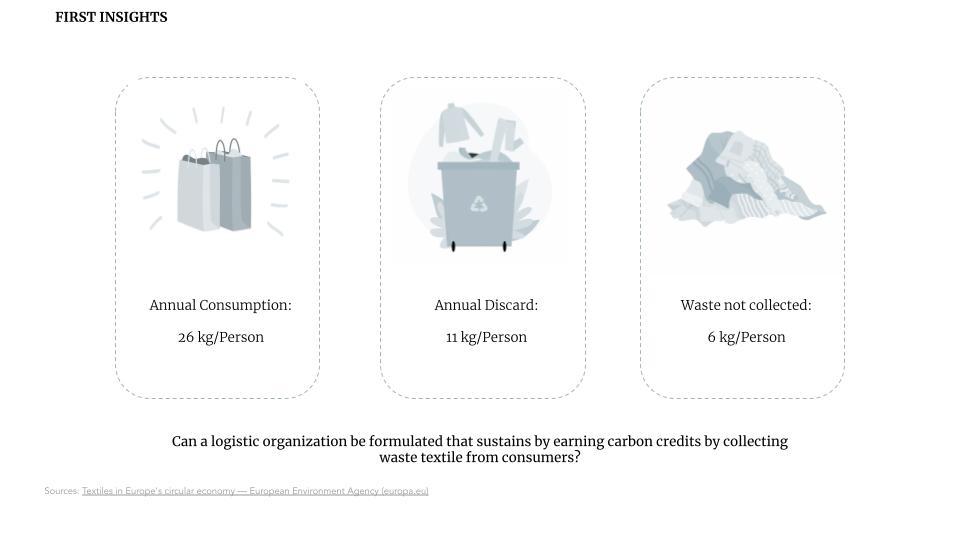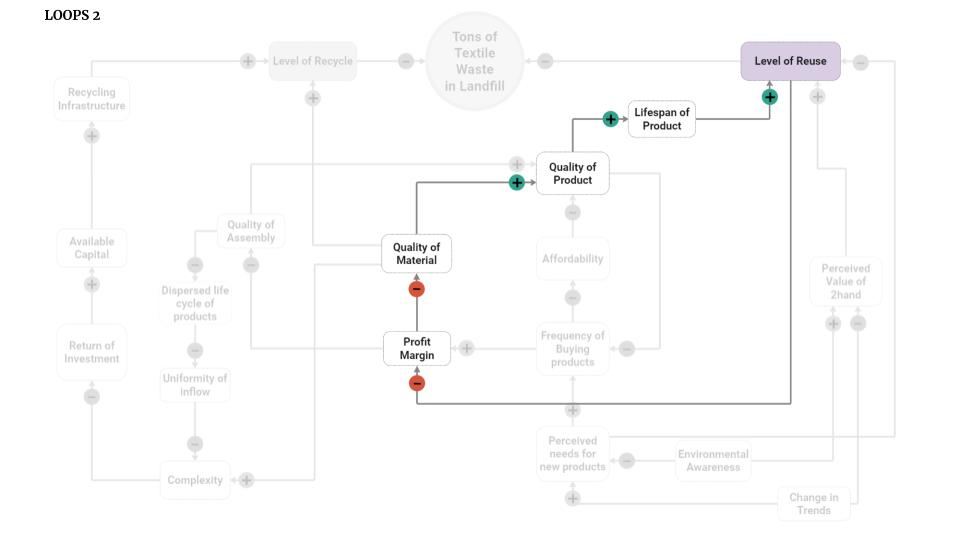












Causal loop diagrams
is tool that is used to tell stories about the complex issues within the fast fashion industry. By identifying the interrelationships within the system’s structure, these diagrams helps to understand the impacts and trade-offs associated with different factors. The resulting visual representation then is used to effectively communicate this understanding and facilitate discussion about potential solutions to the challenges faced by the industry.

The Trade-offs of Fast Fashion: Affordability, Quality, and Profitability
In the fast fashion system, products are typically less affordable when the quality is higher. Cheaper products are frequently made of inferior materials, which can lead to higher profit margins for the businesses that manufacture them. However, the affordability of a product is frequently related to how frequently it is purchased because consumers may be more inclined to do so if prices are lower.
The profit margin and the quality of the materials used to make the products are correlated, with lower-quality materials frequently costing less to produce and yielding higher profit margins. However, the final product’s quality is frequently correlated with the quality of the raw materials, and lower-quality raw materials may yield lower-quality final products.
The final product’s quality can also be impacted by the assembly process’ quality, with higher-quality assembly frequently resulting in higher-quality products. On the other hand, poorer assembly may yield inferior final goods.
The fast fashion industry as a whole is intricate and intertwined, with trade-offs between quality, price, and profit margins. To create products that are profitable and sustainable while also appealing to consumers, businesses must carefully balance these factors.

The Fast Fashion Profitability Equation
The quality of the materials used in a product’s production has a significant impact on the profit margin in the fast fashion industry. Better finished products are frequently produced using higher quality raw materials, which can command a higher price . On the other hand, while using cheaper materials can result in a product that is less desirable and has a lower quality overall, it can also have high profits over time.
Another element that may affect the profit margin is the product’s lifespan. Long-lasting products may have a longer lifespan and produce less money in the long run. A product’s lifespan can be extended by using products that are intended for reuse or repurposing, which can increase sales and possibly increase brand loyalty. However, designing products to be reused frequently necessitates a higher initial outlay and can have a negative impact on profit margins.
The fast fashion industry must strike a balance between the caliber of the materials used, the product’s lifespan, and its potential for reuse or repurposing.


Solution Mapping
Develop thrift stores and businesses that reuse clothing, as well as environmentally friendly public procurement: This argument highlights the significance of encouraging socially conscious and environmentally friendly practices in public procurement by giving preference to businesses that reuse or recycle clothing. Public institutions can do this to lessen their environmental impact and assist regional companies that support the principles of the circular economy.
Give second-hand donations and the purchase of used goods from local businesses or government agencies top priority: The importance of prioritizing donations for reuse and buying repurposed items through public procurement or local institutions is emphasized in this point, which builds on the first. Not only does this lessen waste, but it also encourages sustainable consumption and helps regional companies that support the circular economy.
Create a framework to make sure the separate collection obligation is carried out properly: This point emphasizes the necessity of creating a framework to make sure separate collection obligations are carried out properly. This entails giving instructions on how to separate various waste types and making sure separate collection is done in a way that maximizes opportunities for recycling and reuse.
Set distinct goals for recycling and preparing for reuse: According to this argument, targets for preparing materials for reuse should be set apart from targets for recycling in order to ensure that the circular economy and reducing waste are also prioritized. Setting goals for the proportion of items prepared for reuse or the number of reuse businesses backed by public institutions may be one way to do this.

